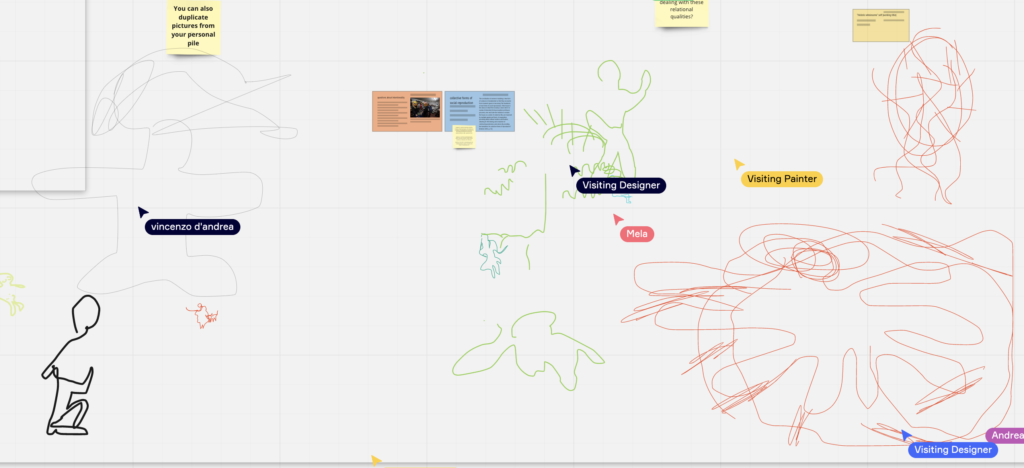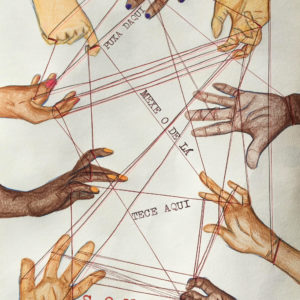As part of the Participatory Design Conference 2022, I joined P.D. Commoners, a self-managed collective of researchers working at the boundaries of commoning and designing, to organize a workshop on Relationality, Commoning, and Designing. After the workshop, we recorded a podcast with Joanna Sad-Sulonen and Giacomo Poderi to summarize and share the workshop experience with those who could not attend. You can listen to the podcast episode below, subscribe to it, or read its transcript.
During the remote workshop sessions, we listened to some Brazilian songs about collective bodies (see the playlist below), and we tried to visually assemble the collective design body of P.D. Commoners (the pseudonym used by the workshop organizers) out of individual body drawings.
The resulting image may be another example of the emerging monster aesthetics. It is a monster because it is a mix of several body parts, similar to Frankenstein, but it is also a monster because it is a decolonial representation of the human subject: relational, emotional, expansive, diverse, colorful, and chaotic. The other is incorporated into the self to the point of redefining the self.
We transformed these individual body drawings:

Into this collective body drawing:

Reflecting on this process of assembling P.D. Commoners, I said the following in the podcast episode:
That’s something that we are collectively becoming conscious of slowly, that we don’t act only individually, and the sum of our actions is not just a simple sum of individual actions and coming up with a greater outcome. It’s really about building collective consciousness that somehow is supported through our bodies, our physical bodies.
But then it operates as if it was a body of its own. Body, in the English language, also has this connotation of institutions. And if you think that participatory design has worked really hard to build and transform institutions, who is transforming that? The institution itself!
In the relational ontologies, we speak a lot about autonomy as an important relational quality. And that means participatory design, once we start to reflect on this, it becomes clear that the best design is the one done by the self. The self for the self. The community for the community, as Arturo Escobar wrote in his marvelous book on Designs for the Pluriverse.
Every community practices at least the design of itself. And inspired by this, we are realizing that perhaps we need to emphasize and explore collective agents in designing a participatory session like the workshop we were organizing. And then for experimenting with that, we asked each individual to draw their body with eyes closed, using a mouse, which is always quite difficult, and challenging, especially for those who are not good at drawing.
But that’s the point. And it’s also bad for those who are good at drawing. So we equalize the expressive matter, the material. And then after each one of us drew their bodies, we open our eyes, we see the strange drawing we made, and we try to assemble those different drawings into a collective design body, which is called PD Commoners, our collective identity that all the participants are also part of. Because they are changing us while they are participating in the workshop. And we came up with this really strange, crazy, chaotic drawing of ourselves looking into a mirror that had a common feature, which is living close or at least going through, traveling through the sea. So we see a lot of wave lines in our collective body. And yes, it was really interesting having this feeling of being together in the sense of being one and being many at the same time.
With this workshop, the podcast, and a paper we are writing on that, I learned that to build commons and share resources, we need first to share our bodies to enable a collective form of consciousness that can take care of the commons.

